- Home
- Louisa May Alcott
Little Women Page 3
Little Women Read online
Page 3
Critics have often remarked upon the more masculine aspects (for her time) of Jo’s characterization: her boyish nickname, her husky voice, her desire to play only the male roles in family theatricals, the “gentlemanly” linen collar she wears, her natural use of the phrase “I’m your man,” her restless spirit, her ambition to do something splendid with her life, her desire for fame, her love of such sports as running and riding. Jo claims she wants to marry Meg herself to keep her in the family. She doesn’t care much for the company of other girls, with the exception of her sisters, of course, and she positively loathes girlish gossip; instead, she appreciates “good strong words that mean something” (p. 43). (When Amy forces Jo to accompany her on social calls in chapter 29, Jo’s humorous mockery of the girls they visit makes for one of the novel’s most unforgettable episodes.) Unlike her more traditional, ladylike sisters, Jo understands the need for social reform on a number of issues affecting women’s autonomy. Not inclined to domestic responsibility – or skill, for that matter – Jo views her future published stories as her children.
Jo’s masculine identification may begin to explain why at the end of the novel she opens a school for boys instead of for girls, which her social beliefs might dictate as appropriately reparative. Her empathy with the male gender seems to preclude any sympathy she might have for her fellow young women, and her decision to open a boys’ school, even given her unorthodox admission policies, is a fairly conventional one. Jo, depicted throughout Little Women as an eccentric, outrageously unconventional character, makes some customary choices in the end and is certainly no radical. Although her husband may be unexpected, she marries nonetheless. Overall, Jo’s feminism and mas culinity have suggested to some later commentators that a latent homosexuality lies beneath her surface, and, by extension, beneath her creator’s as well. Alcott’s own disinclination to marry and her devotion to feminist reform work and agitation have led these critics to question her sexual preferences.
Once one begins to think further about Alcott’s novel, certain contradictions emerge, particularly for more recent readers. There were always things about the March sisters that puzzled me, for example. The family complains of being poor, and indeed can’t even afford to buy each other Christmas presents, yet they keep a servant, the faithful Hannah. How impoverished, then, could the Marches be? The family’s financial situation must have been very bad indeed for Aunt March to offer to adopt one of the daughters, thus the Marches’ priorities are very interesting. Would it have been unseemly in its social circles for the family not to employ a servant? Is Hannah another charity case? That is, was it more important for the Marches to spend what extra money they did have to provide another person with a livelihood than to spend it on material luxuries (even if, as is the case with their Christmas breakfast, donated to a truly impoverished immigrant family, those material luxuries were food)?
Clearly the Marches are not as poor as Meg thinks they are. The sisters’ Christian-inspired self-sacrifice, however, can seem at times to border on masochism, which may lead one to question the girls’ motivations. Are they so generous and accommodating because they want to be, for altruism’s sake? Are they competing with each other in trying to please their impossibly good mother, the judge of their virtuousness? Or have they come to enjoy abnegation for what it represents: their worthiness to God and society? Beth and Jo’s selflessness competitions – when, for example, Jo wins a writing contest and offers Beth a trip away with her spoils – at times suggest the elaborate sacrifices of medieval saints. Beth, a household saint in her homely shrine, wears a metaphorical hair shirt and practically flagellates herself daily, even within her transcendental universe. One wonders how much Beth’s fate itself is actually a sacrifice in Alcott’s mind. Such a typical Marmee maxim as “a kiss for a blow is always best” is a bit disturbing when taken with her other advice as a reinforcement of the need for female sacrifice, even if it does echo New Testament doctrines to turn the other cheek.
Marmee displays her tremendous devotion to God in a few preachy monologues, particularly in chapter 9, yet the family, although clearly Protestant, is not described as belonging to any particular sect – perhaps another extension of the novel’s planned universality. As important as religion seems to be in their lives, the Marches offer little formal worship; they do not attend church services, for example, and their relationship to God seems very general, represented through praying privately, singing religious hymns, and imitating Bunyan’s questing hero, Christian, from The Pilgrim’s Progress. Aesthetic Amy’s fascination with the colorful, exotic Roman Catholicism of Aunt March’s French maid is thus understandable, and Marmee does not reject out of hand the religious objects, such as rosary beads and a devotional print of the Virgin Mary, that Amy brings back from her aunt’s house.
The March girls’ relationship with their mother is noteworthy for how it reinforces a rather claustrophobic household dynamic. Although many readers, particularly mothers, may find it touching that Meg reserves the “first kiss” that concludes her marriage ceremony for her mother, most others will note the utter strangeness of this choice. Marmee happily accepts what should be the new husband’s right. What’s going on here? Marmee’s total love sometimes seems to negate her daughters’ desire for adult romantic relationships, which they instead seem to fear. Marmee’s fully embraced devotion unsettles the normal course of the girls’ adolescent development from sheltered dependence into autonomous adulthood; indeed, the thought of one sister leaving the nest throws the household into emotional turmoil. Of course, nineteenth-century families thought of themselves differently than twenty-first-century families do, but Meg’s kiss is still quite unusual. Jo swears she’d never pop the family’s heretofore hermetic bubble, as Meg has done through marriage, yet she quickly moves to New York City to work and to try her talents as a writer. Proximity, apparently, does not define the word abandonment in the March household; rather, the commencement of a separate, conjugal life does. Jo seems to realize the danger – and demonstrates her progress from self-centered idealist to a more thoughtful, practical type – when she notes late in part two, “Mothers are the best lovers in the world, but… I’d like to try all kinds” (p. 422).
Marmee tells her daughters early on that being chosen and loved by a good husband is the best thing that could ever happen to them. Of course, this is better than being chosen by a bad one, but many readers may secretly wish that someone like Alcott hadn’t written such things! We know the author didn’t achieve this vaunted feminine ideal herself – she served instead as her family’s caretaker to the end of her life, dying just two days after her father. Glorifying marriage here reads either as a sad, perhaps even pathetic statement on the relationships her own spinster status had caused her to miss, or as a purely disingenuous commentary on what had traditionally been expected of women. Which is worse? Is Alcott bending over backward in trying not to instill her own “outlandish” beliefs in young girls? Is she trying to conciliate traditional values in order not to damage her book sales? Is this inclusion some kind of apology ripe for psychoanalytic critique? If, however, through the girls’ trials we are made to see Marmee as a comforting voice of reason, how are we to interpret her prediction, given as domestic gospel truth? The central question remains: Where is the real Louisa May Alcott, and why doesn’t she appear in Little Women? The most accommodating answer would insist that she does appear, frequently in specific autobiographical details. She isn’t present enough, however, to satisfy some critics, who view Little Women as a wasted opportunity for Alcott to have had her characters walk the feminist walk instead of, in Jo’s case in particular, make compromises.
Alcott’s cynicism about women’s traditional roles – and the impossible standards to which many women hold themselves in trying to adjust to a new prescribed role – does come across more directly on certain occasions in Little Women. The satirical “salute” to Babydom, which Meg and her husband, John, inhabit in chapter 38 following the bir
th of their twins, portrays one perspective on overindulgent parenthood but also reveals some limits on just how far the author was willing to stretch her patience in depicting the trinity of hearth, home, and husband as the pinnacle of success for any woman. “If [John] hinted at [attending] a lecture or concert,” Alcott writes, “he was answered with a reproachful look [from Meg], and a decided – ‘Leave my children for pleasure, never!’” (p. 377). Alcott’s commentary on spinsters (her own social category) is also telling; she carefully entreats her readers not to laugh at older unmarried women, because “often very tender, tragic romances are hidden away in the hearts that beat so quietly under the sober gowns, and many silent sacrifices of youth, health, ambition, love itself, make the faded faces beautiful in God’s sight” (pp. 424-425). Alcott undercuts the seriousness of these ideas by joking that her readers, as Jo has done in the part of the story these passages interrupt, have probably fallen asleep during her digression, yet her points are well taken. This defense of spinsterhood, if sentimental, also comes across as perfectly sincere, and for very good reason.
Alcott’s Gothic sensational stories – of a type popular with the masses (and with Jo, until she is instructed otherwise) but considered rather lurid by the literary establishment of her day – offered her a bit more freedom than Little Women’s realism did. In some of these, Alcott pushes harder on girls’ impulses toward independence, evidenced by the innate (but usually suppressed) disrespect for authority that Jo demonstrates in Little Women. For example, the frustrated, impetuous teenage heroine of Alcott’s sensational novel A Long Fatal Love Chase (written in 1866 but not published until 1995) – the evocatively named orphan Rosamond Vivian – shrieks in a fit of adolescent pique to her uncaring grandfather that she would sell her soul to Satan for a year of freedom, rather than have to endure her stultifying, lonely life with him (a vow she comes to rue shortly after her grandfather’s mysterious friend Phillip Tempest wins her in a card game). Words such as those never issue from the mouth of Jo March, who, although somewhat constrained, at least has a loving home life. When Jo approaches such sentiments, she gets a moralizing lecture from Marmee or another March sister by way of counterpoint.
Some critics also regret, early in the book, the girls’ having to assume masculine identities in order to compose their family newspaper, based on Charles Dickens’s Pickwick Papers. Alcott personally knew the influential feminist writer Margaret Fuller, who edited the main transcendentalist journal, the Dial, and she easily could have adapted Fuller’s experience for her March sisters and had them create the newspaper without resorting to male drag. But had Alcott written the scene without the girls’ imaginative adoptions of famous fictional personae, would the newspaper meetings have been as colorful? Probably not, nor nearly as entertaining for children. Essentially, although Alcott’s choices in Little Women may be frustrating, we have to remember that the author’s goals for the novel – to sell books and to entertain children, both of which she achieved – are different from the ones we assign to her with hindsight.
It’s true that Alcott’s most famous novel is a period piece; but when compared to traditional nineteenth-century literature for children available at the time, Little Women’s protagonists are remarkably complex, even slightly – if an emphatic slightly – subversive. Generally speaking, the young characters in popular American children’s literature prior to Alcott’s time were either wholly wicked brats who entirely deserved the strict punishment they received or purely angelic little saints in whose mouths the proverbial butter could never melt. In either case, these fictional children spoke like little adults; one early criticism of Alcott’s novel involved the characters’ (especially Jo’s and Laurie’s) use of slang terms (Jo often uses work in the revised text, when she had used grub in the original) and quasi-cusswords, like “Jupiter Ammon!” and “Christopher Columbus!” – bone-chilling language, to be sure. (Contemporary critics also bemoaned the March girls’ shocking practice of staging plays on the Christmas holiday.)
In 1880 Alcott’s British publisher suggested a revised version of Little Women, one that would not only eliminate quirks of New England regional language (the word quinydingles, for example, was changed to notions) but also reduce much of the slang terminology in general to provide for a more ladylike tone. (This 1880 version is the one most readers today are familiar with, and it is used in the present Barnes & Noble classics edition.) Notwithstanding such changes, critic Barrett Wendell in his 1900 Literary History of America still insists of Little Women, “instead of unquestioning self-respect, its personages display that rude self-assertion which has generally tainted the lower middle class of English-speaking countries.” It is a testament to Alcott’s skill as a storyteller that the text still retains a youthful spirit of play and naturalness that the revision could not obscure.
As such, this Alcott novel is no great fantasy, for even if the characters may seem outrageously obedient and good in a young twenty-first-century reader’s mind, they exist in the realm of nineteenth-century possibilities. The March girls struggle with real problems – vanity, restraint, shyness, envy. In large part, the terms of their struggles make the difference. If pickled limes are no longer the forbidden vogue in school, as they are at Amy‘s, perhaps illegally downloaded MP3 files are. Although the restrictions on Jo’s behavior and future doubtless are stronger than those today’s teens face, Jo’s choices demonstrate how she can begin to learn to live satisfactorily within those restrictions: She does marry, but we hope she only postpones her plans to travel the globe and her ambition to be a world-famous writer. Not every reader will view her compromise as positive, but young girls can still respond to Jo’s dilemma with understanding and empathy. And today’s young readers look to Little Women in particular, of course, to learn about what daily life might have been like for them had they lived in nineteenth-century America. Alcott’s detailed lessons, in this regard, work.
More than many other children’s novels, Little Women tends to compel commentators, female ones in particular, to discuss their own personal childhood impressions of the novel and how it affected their lives. This kind of retrospection in some ways can be frightening for what it reveals. Like many young girls, I was devoted to the book; I borrowed it from the library a few times a year and reread it obsessively in its entirety. (My mother eventually bought me a handsome illustrated hardcover edition, but it seemed somehow too pretty to mar through frequent use.) After my own childhood neuroses first helped me to identify in no small degree with Beth’s painful, extreme shyness, Jo ultimately won my allegiance as my favorite character. She was the kind of girl I wanted to be: outspoken, possessed of big dreams, a bit of a tomboy. I fancifully saw television’s nervous groundbreaker Mary Richards, from The Mary Tyler Moore Show – this character being a weekly combination of the petrified and the confident – as an adult Jo March for the 1970s (note, of course, Mary’s perpetually single romantic status). I too was disappointed in Jo’s choice of husband; I found Amy particularly annoying and liked Laurie very much. Later, I too was disappointed that Jo overcame her objections to marriage itself. I remember repeatedly feeling toward the book’s end as though the plot had run away from me; I’d gone along with everything up until the last few chapters. The book seemed to me to lose its charming day-by-day sense of detail once the marriage plots start weaving. The action speeds up dramatically, and the novel ends quickly following Jo’s marriage. I think my frustration at the result ruined all marriage-plot novels for me forever – after the marriage, I observed, comes the end of the story. Whatever happens after, I thought, isn’t even interesting enough to write down.
If I were a young girl in 2004 reading Little Women for the first time, would I compare Jo to some of today’s fictional teen heroines, such as Buffy Summers, of television’s Buffy the Vampire Slayer? As teenage girls can now be seen on television annihilating demons with nigh impunity (after some natural concern, of course, over how this behavior will affect their popularity in
high school – some things never change), Jo comes off as quaintly mundane at best, wimpy and suspiciously susceptible at worst. Yet it is curious, and in this context somehow appropriate, that the hugely popular series Buffy should reference the hugely popular novel Little Women directly. In one of the series’ last episodes, the town of Sunnydale’s outwardly insipid yet inwardly demonic founder and former mayor, Richard Wilkins III (who, a few seasons previously, had transformed into a giant serpent and been blown up along with the high school on Buffy’s graduation day), raises the topic of his favorite character in Little Women. He claims that most people would guess he’d like Beth – for her easy-prey weakness, one supposes; but he instead prefers Meg, for her propriety and ladylike demeanor. Meg is clearly a contrast, one might say, to Buffy, the mayor’s ass-kicking nemesis. Mayor Wilkins also fondly recalls a scene he treasures: the time Jo burns Meg’s hair with a set of curling tongs. The reason why this commentary is so funny lies at the heart of recent critical debates about Alcott’s most famous novel. What can Jo March offer young girls that heroines like Buffy Summers cannot – even after earlier marvels of powerful girlhood, such as Astrid Lindgren’s 1950s super-strong heroine, Pippi Longstocking?
Much of Jo’s charm and appeal lie in the idea that, unlike Buffy Summers, she is not a superhero (although Beth’s goodness certainly appears superpowered). As Alcott writes toward the end of the novel, “Jo wasn’t a heroine, she was only a struggling human girl like hundreds of others, and she just acted out her nature…. She had often said she wanted to do something splendid, no matter how hard; and now she had her wish, for what could be more beautiful than to devote her life to Father and Mother, trying to make home as happy to them as they had to her? And if difficulties were necessary to increase the splendor of the effort, what could be harder for a restless, ambitious girl than to give up her own hopes, plans, and desires, and cheerfully live for others?” (p. 420). We note, of course, that Alcott made such sacrifices in her own life, and her point, although it may be hard to swallow, is that heroics come in both big and small proportions.

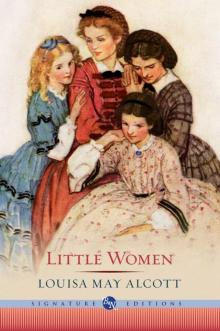 Little Women
Little Women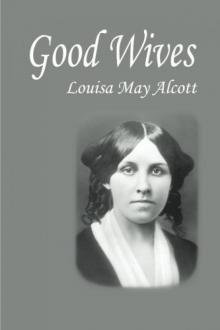 Good Wives
Good Wives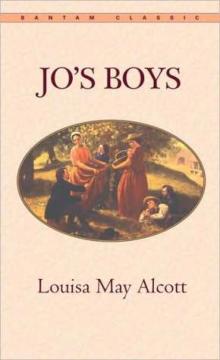 Jo's Boys
Jo's Boys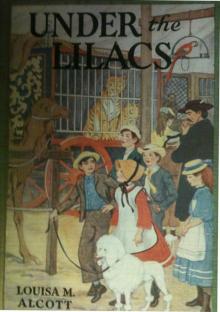 Under the Lilacs
Under the Lilacs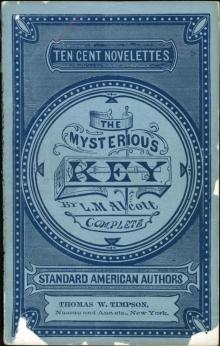 The Mysterious Key and What It Opened
The Mysterious Key and What It Opened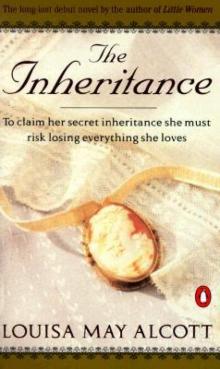 The Inheritance
The Inheritance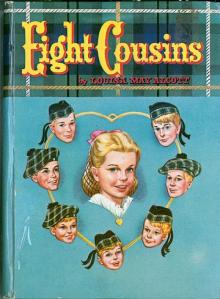 Eight Cousins
Eight Cousins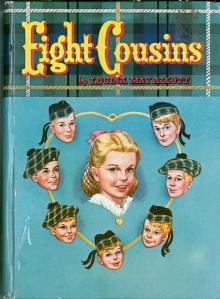 Eight Cousins; Or, The Aunt-Hill
Eight Cousins; Or, The Aunt-Hill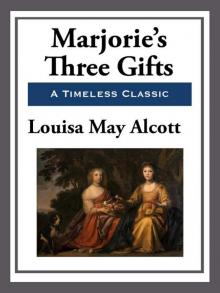 Marjorie's Three Gifts
Marjorie's Three Gifts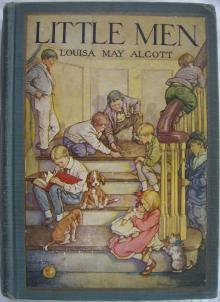 Little Men
Little Men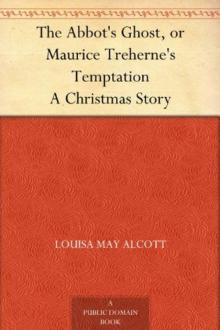 The Abbot's Ghost, or Maurice Treherne's Temptation: A Christmas Story
The Abbot's Ghost, or Maurice Treherne's Temptation: A Christmas Story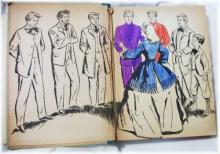 Rose in Bloom
Rose in Bloom Shawl-Straps
Shawl-Straps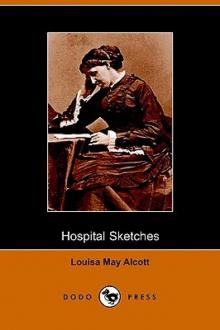 Hospital Sketches
Hospital Sketches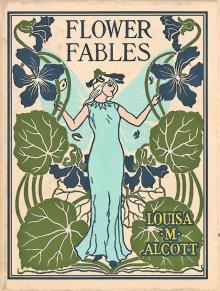 Flower Fables
Flower Fables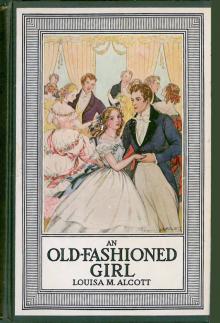 An Old-Fashioned Girl
An Old-Fashioned Girl The Candy Country
The Candy Country Jack and Jill
Jack and Jill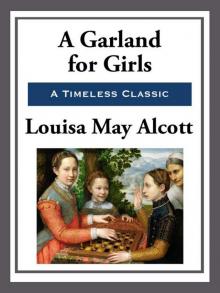 A Garland for Girls
A Garland for Girls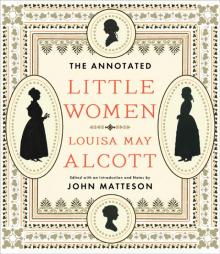 The Annotated Little Women
The Annotated Little Women A Classic Christmas
A Classic Christmas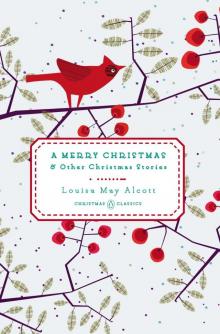 A Merry Christmas
A Merry Christmas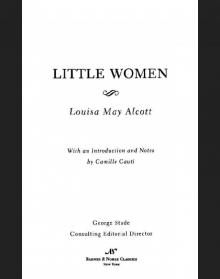 Little Women (Barnes & Noble Classics Series)
Little Women (Barnes & Noble Classics Series)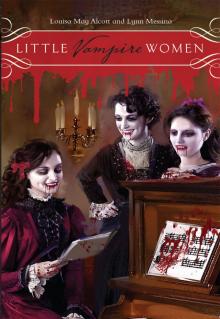 Little Vampire Women
Little Vampire Women